Related Research Articles

Hula is a Hawaiian dance form expressing chant (oli) or song (mele). It was developed in the Hawaiian Islands by the Native Hawaiians who settled there. The hula dramatizes or portrays the words of the oli or mele in a visual dance form.
The Maldives is an island nation in the Indian Ocean, and its music is marked mainly by Indian, East African, and Arab influences.

A sarong or a sarung is a large tube or length of fabric, often wrapped around the waist, worn in Southeast Asia, South Asia, Western Asia, Northern Africa, East Africa, West Africa, and on many Pacific islands. The fabric often employs woven plaid or checkered patterns or may be brightly colored by means of batik or ikat dyeing. Many modern sarongs have printed designs, often depicting animals or plants. Different types of sarongs are worn in different places in the world, notably the lungi in the Indian subcontinent and the izaar in the Arabian Peninsula.
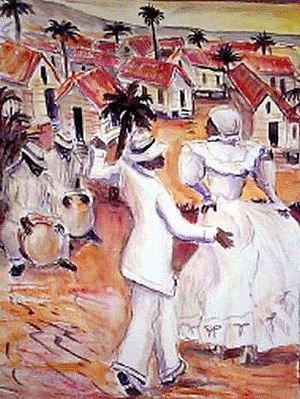
Bomba is an umbrella term that refers to a variety of musical styles and associated dances originating in Puerto Rico. It was developed by enslaved Africans and their descendants in sugar plantations along coastal towns, most notably Loiza, Mayagüez, Ponce, and San Juan, during the 17th century. It is the island's oldest musical tradition.

The traditional music of Tuvalu consists of dances, including fatele, fakanau and fakaseasea. The influence of the Samoan missionaries sent to Tuvalu by the London Missionary Society from the 1860s resulted in the suppression of songs about the traditional religions or magic and many songs were lost. As the influence of the missionaries diminished in the 20th century the traditional dances were revived and the siva dance tradition from Samoa also became popular.
Big Drum is a genre, a musical instrument, and traditional African religion from the Windward Islands. It is a kind of Caribbean music, associated mostly closely with the music of Saint Vincent and the Grenadines, Music of Guadeloupe, Carriacou in Grenada and in the music of Saint Kitts and Nevis.

The term "pahu" is a general word for drum in Hawaiian culture however, there are a variety of them. To fully understand the "pahu" as it pertains to dance, it's important to consider the following explanation.
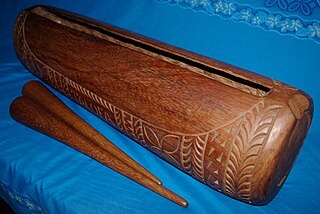
The Pātē is a Samoan percussion instrument of Tahitian origin, named after the Samoan word for "beat" or "clap" "pulse". It is one of many Samoan log drum variants and is of the slit drum family, and therefore is also of the idiophone percussion family. It is made from a hollowed-out log, usually of Miro wood and produces a distinctive and loud sound. Different sizes of log drums offer different pitches and volumes, as well as striking the log drum in the middle or near the ends.
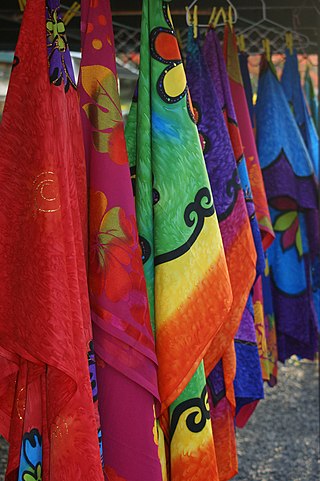
A pāreu or pareo is a wraparound skirt worn on Tahiti. The term was originally used only for women's skirts, as men wore a loincloth, called a maro. Nowadays the term is used for any cloth worn wrapped around the body by men and women.
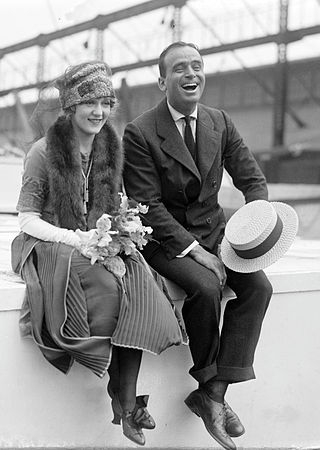
Western fashion in the 1920s underwent a modernization. Women's fashion continued to evolve from the restrictions of gender roles and traditional styles of the Victorian era. Women wore looser clothing which revealed more of the arms and legs, that had begun at least a decade prior with the rising of hemlines to the ankle and the movement from the S-bend corset to the columnar silhouette of the 1910s. Men also began to wear less formal daily attire and athletic clothing or 'Sportswear' became a part of mainstream fashion for the first time.

The xibelani dance is an indigenous dance of the Tsonga women from Mpumalanga and Limpopo located in South Africa. The name of the dance comes from the native Xitsonga language and it can translate to "hitting to the rhythm", for example, the concept "xi Bela ni vunanga". The name "xibelani" typically refers to the dance style while the skirt itself is referred to as "tinguvu", however, the term "xibelani" is sometimes used to refer to both the dance and the skirt.
The Mapalé is an Afro-Colombian style of dance that was brought over by the slaves and representing the fishermen after a long day of work. Folkloric Dance in Colombia and Ecuador.. Retrieved from http://www.escapeartist.com/colombia/travel/folkloric-dance-in-colombia/ </ref> Its name comes from the Cathorops mapale (fish) when they are out of the water. The dance moves are compared with the agility and strength of those who are performing it. From the clothing to the precise moves of the hips and shoulders. The body movements during the dance are swiftly made to follow the beating of the drums and represent the fish out of the water (men), while the women are the sea.
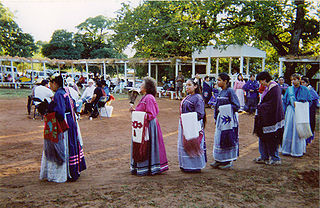
The turkey dance is one of the most important traditional dances among Caddo people. Women dance the turkey dance, while men drum and sing the songs, which describe events in Caddo history.
Several folk dance forms evolved in different regions of Odisha, Odissi and Chhau being some popular forms. Sambalpuri dance is most popular dance of western Odisha and is enjoyed by many.

Folk dance of Mexico, commonly known as baile folklorico or Mexican ballet folk dance, is a term used to collectively describe traditional Mexican folk dances. Ballet folklórico is not just one type of dance; it encompasses each region's traditional dance that has been influenced by their local folklore and has been entwined with ballet characteristics to be made into a theatrical production. Each dance represents a different region in Mexico illustrated through their different zapateado, footwork, having differing stomps or heel toe points, and choreography that imitates animals from their region such as horses, iguanas, and vultures.

Tahitian drumming is a style of drumming native to Tahiti and French Polynesia. Tahitian drumming and dance have become symbols of Polynesian heiva to the western world. Heiva is the Tahitian term for entertainment. This authentic performance symbolizes the past and present state of social hierarchies within the community and the island. There has been a significant amount of change to Tahitian drum dancing within the past fifty years. These changes have come from many different aspects of Polynesian society. However, many of them stem from the broader outreach of this tradition to the rest of the world. This music has served as inspiration for many other styles across the globe, especially in other areas of the Pacific.

The culture of the Cook Islands reflects the traditions of its fifteen islands as a Polynesian island country, spread over 1,800,000 square kilometres (690,000 sq mi) in the South Pacific Ocean. The traditions are based on the influences of those who settled the Cook Islands over many centuries. Polynesian people from Tahiti settled in the Cook Islands in the 6th century. Portuguese captain Pedro Fernandes de Queirós made the first recorded European landing in the islands in the early 17th century, and well over a hundred years later, in the 18th century, the British navigator, Captain James Cook arrived, giving the islands their current name. Missionaries developed a written language, bringing schools and Christianity to the Cook Islands in the early 19th century. Cook Islands Māori, also known as Māori Kūki 'Āirani or Rarotongan, is the country's official language.

Women in the Cook Islands are women of the Oceanian region who live in or are from the Cook Islands, an island country in the South Pacific Ocean that is in free association with New Zealand.

Pa'u riders, , are wahine horseback riders who wear long, colorful skirts and characteristically ride astride, rather than sidesaddle. This equestrian tradition's roots are from the early 19th century, when horses were introduced to Hawaii and aliʻi women dressed up to ride for formal occasions. It declined after the overthrow of the Kingdom of Hawaii, but was revitalized in the early 20th century with the establishment of formal riding organizations called Pa'u Riders. Today, they participate in Kamehameha Day floral parades and other parades and festivals throughout the islands.
References
- 1 2 "Dancing & drumming". Enjoycookislands.com. Archived from the original on 10 May 2014. Retrieved 26 March 2014.
- 1 2 3 4 5 Sissons 1999, p. 44.
- ↑ Stanley 1999, p. 312.
- Bibliography
- Sissons, Jeffrey (1 January 1999). Nation and Destination: Creating Cook Islands Identity. editorips@usp.ac.fj. ISBN 978-982-02-0142-2.
- Stanley, David (1999). South Pacific Handbook. David Stanley. ISBN 978-1-56691-172-6.